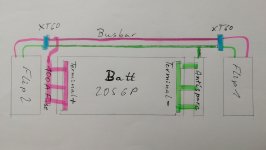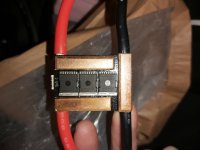badgineer
10 W
My assumption about the driver was "Will do fine, doesn't have a hard job here anyway (driving a single FET per output)"
And the whole thing is 100$ (+tax & shipping). I don't expect it to have the best parts with all the bells and whistles anyway. A purpose built gate driver for EV applications is cool.
Why might that be? (my intended use case for this is with a 80 kv-ish 80100 motor, which will not have much inductance).
Br,
And the whole thing is 100$ (+tax & shipping). I don't expect it to have the best parts with all the bells and whistles anyway. A purpose built gate driver for EV applications is cool.
mxlemming said:I'm more interested in the low side topology, I built a VESC based controller with low side shunts and it really hates low inductance motors. Everything checks out perfectly but... Still just behaves a somewhat badly.
Why might that be? (my intended use case for this is with a 80 kv-ish 80100 motor, which will not have much inductance).
Br,




